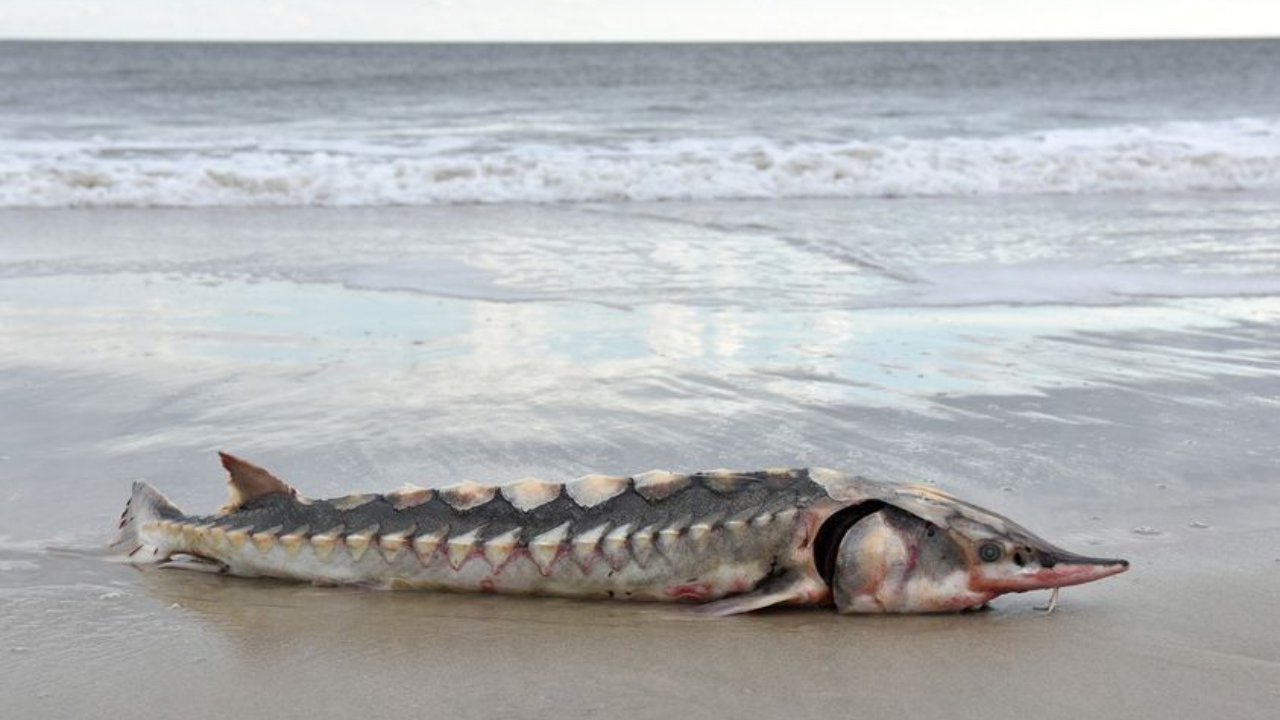A rare Atlantic sturgeon that was around when dinosaurs were alive washed up on an East Coast beach. On Assateague Island, which is between Maryland and Virginia, a photographer took pictures of a fish that lived long ago and is now in danger of going extinct.
All the way from Canada to Florida, you can find Atlantic sturgeon. According to NOAA, they hatch in freshwater rivers and then swim out to the sea when they are older. When they grow up, they go back to rivers to lay their eggs.
These fish can live for up to 60 years and can get as long as 14 feet and weigh as much as 800 pounds. A study from the University of Michigan says that they are “living fossils,” which means that their species hasn’t changed much in millions of years.
NOAA says that they are rare because they are in danger of going extinct. These fish are in danger from fishing gear and boats, the destruction of their habitat, and things like dams and other barriers that make it hard for them to live there.
Allen Sklar, a photographer, took pictures of the stranded sturgeon on Assateague Island last month.

Sklar said that the fish was 37 inches long. Assateague Island National Seashore said on Facebook that a sturgeon washed up on the same beach in 2016, and Sklar also took pictures of that one.
The Assateague Island National Seashore post said that the sturgeon was not eaten right away by birds like other dead fish because it had scutes, which are bony plates that act like armor. Birds can’t eat this fish, but they can eat fish with scales.
Atlantic sturgeon still spawn in about 22 of the 38 rivers in the U.S. and Canada, where they used to do so in the past. Most Atlantic sturgeons live in the St. John River in Canada, which is in the United States. NOAA says that between 2013 and 2015, there were between 18,000 and 21,000 adult sturgeon in this river.
There are a lot fewer Atlantic sturgeons in the four other main places where they live. In 2013, about 75 adults came back to the York River in Virginia to lay their eggs. Since then, the number of adults has been estimated to be between 52 and 219 each year, for a total of about 300 adults.







